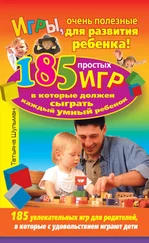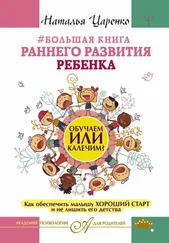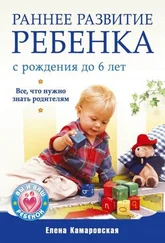Warneken, F., Tomasello, M. (2009), «The Roots of Human Altruism», Bristish Journal of Psychology, 100, стр. 455–471.
Там же; Warneken, F. & Tomasello, M. (2006), «Altruistic Helping in Human Infants and Young Chimpanzees», Science, 311, стр. 1301–1303; Warneken, F. (2013), «Young Children Proactively Remedy Unnoticed Accidents», Cognition, 126, (1), стр. 101–108.
См. видео некоторых из этих экспериментов на сайте Laboratory for Developmental Studies of Harvard University, https://software.rc.fas.harvard.edu/lds/research/warneken/video-clips/
Ricard M. (2013), Plaidoyer pour l’altruisme (Речь в защиту альтруизма), Pocket, стр. 270.
Harbaugh, W., Mayr, U. & Burghart, D., «Neural Responses to Taxation and Voluntary Giving Reveal Motives for Charitable Donations», art. cit., стр. 1622–1625; Moll, J., Krueger, F., Zahn, R., Pardini, M., de Oliveira-Souza, R. & Grafman, J., «Human Fronto-Mesolimbic Networks Guide Decisions about Charitable Donation», см. выше, стр. 15623–15628; Lecomte, J., La Bonté humaine (Человеческая доброта), см. выше; Thoits, P. A. & Hewitt, L. N., «Volunteer Work and Well-Being», art. cit., стр. 115–131; Aknin, L. B., Dunn, E. W. & Norton, M. I., «Happiness Runs in a Circular Motion: Evidence for a Positive Feedback Loop Between a Prosocial Spending Happiness», см. выше.
Aknin, L. B., Hamlin, J. K. & Dunn, E. W. (2012), «Giving Leads to Happiness in Young Children», PLoS ONE, 7, (6), e39211.
Le Disaster Research Center, de l’university of Delaware; Gilman, S. & de Lestrade, T., Vers un monde altruiste? (К альтруистическому миру?), документальный фильм, упомянутый выше.
Gueguen, C., Pour une enfance heureuse (За счастливое детство), см. выше.
Vaish, A., Carpenter, M. & Tomasello, M. (2010), «Young Children Selectively Avoid Helping People with Harmful Intentions», Child Development, 81, (6), стр. 1661–1669.
Bloom, P. (2013), Just Babies: The Origins of Good and Evil., Broadway Books; см. также его интервью для упомянутого выше документального фильма Vers un monde altruiste? (К альтруистическому миру?), Sylvie Gilman и Thierry de Lestrade.
Hamlin, J. K., Wynn, K. & Bloom, P. (2007), «Social Evaluation by Preverbal Infants», Nature, 450, (7169), стр. 557–559.
Hamlin, J. K. & Wynn, K. (2011), «Young Infants Prefer Prosocial to Antisocial Others», Cognitive Development, 26, (1), p. 30–39; Wynn, K. (2014), «The Discriminating Infant: Early Social Judgments and the Roots of Good and Evil», конференция в департаменте психологии университета Миссури (доступна онлайн).
Helwig, C. C. & Turiel, E. (2002), «Children’s Social and Moral Reasoning», in The Wiley-Blackwell Handbook of Childhood Social Development, стр. 567–583.
Tabibnia, G., Satpute, A. B. & Lieberman, M. D., «The Sunny Side of Fairness…», см. выше, стр. 339–347; Tabibnia, G. & Lieberman, M. D. (2007), «Fairness and Cooperation are Rewarding…», см. выше, стр. 90–101; Sanfey, A. G., Rilling, J. K., Aronson, J. A., Nystrom, L. E. & Cohen, J. — D. (2003), «The Neural Basis of Economic Decision-Making in the Ultimatum Game», Science, 300, стр. 1755–1758.
Warneken, E. & Tomasello, M. (2008), «Extrinsic Rewards Undermine Altruistic Tendencies in 20-Month-Olds», Developmental Psychology, 44, (6), стр. 1785–1788.
На сайте: www.celinealvarez.org
Warneken, F. & Tomasello, M., «The Roots of Human Altruism», см. выше, стр. 455–471; Swinyard, W. & Ray, M. L. (1979), «Effects of Praise and Small Requests on Receptivity to Direct-Mail Appeals», Journal of Social Psychology, 108, p. 177–184; Kraut, R. E. (1973), «Effects of Social Labeling on Giving to Charity», Journal of Experimental Social Psychology, 9, стр. 551–562; Strenta, A. & Dejong, W. (1981), «The Effect of a Prosocial Label on Helping Behavior», Social Psychology Quarterly, 44, (2), стр. 142–147; Grusec, J. E. & Redler, E. (1980), «Attribution, Reinforcement, and Altruism: A Developmental Analysis», Developmental Psychology, 16, (5), стр. 525–534.
Janssens, J. M. A. M. & Dekovic, M. (1997), «Child Rearing, Prosocial Moral Reasoning, and Prosoial Behaviour», International Journal of Behavioral Development, 20, (3), стр. 509–527.
Lee, L., Piliavin, J. A. & Call, V. R. A. (1999), «Giving Time, Money, and Blood: Similarities and Differences», Social Psychology Quarterly, 62, (3), стр. 276–290.
Lipscomb, T. J., Larrieu, J. A., McAllister, H. A. & Bregman, N. J. (1982), «Modeling and Chidlren’s Generosity: A Developmental Perspective», Merrill-Palmer Quarterly, 28, стр. 275–282; Presbie, R. J. & Coiteux, P. F. (1971), «Learning to Be Generous or Stingy: Imitation of Charing Behaviour as a Function of Model Generosity and Vicarious Reinforcement», Child Development, 42, (4), стр. 1033–1038; Bekkers, R. (2007), «Intergenerational Transmission of Volunteering», Acta Sociologica, 50, (2), p 99–114; Wilhelm, M. O., Brown, E., Rooney, P. M. & Steinberg, R. (2008), «The Intergenerational Transmission of Generosity», Journal of Public Economics, 92, стр. 2146–2156.
Whiting, B. B. & Whiting, J. W. M. (1975), Children of Six culture. A Psycocultural Analysis, Harvard University Press; Staub, E. (2003), The Psychology of Good and Evil. Why Children, Adults and Groups Help and Harm Others, Cambridge University Press, chap. 11.
Kochanska, G. (2002), «Mutually Responsive Orientation Between Mothers and Their Young Children: A Context for the Early Development of Conscience», Current Directions in Psychological Science, 11, (6), стр. 191–195; Kochanska, G. & Murray, K. T. (2000), «Mothers-Child Mutually Responsive Orientation and Conscience Development: From Toddler to Early School Age», Child Development, 71, (2), стр. 417–431; Kochanska, G., Aksan, N., Knaack, A. & Rhines, H. M. (2004), «Maternal Parenting and Children’s Conscience: Early Security as Moderator», Child Development, 75, (4), стр. 1229–1242.
Rosenberg, M. (2016), Les Mots sont des fenêtres (ou bien ce sont des murs) (Слова — это окна или все-таки стены?), La Découverte.
См. карту на сайте: www.celinealvarez.org/carte
Конец ознакомительного отрывка
Купить книгу












